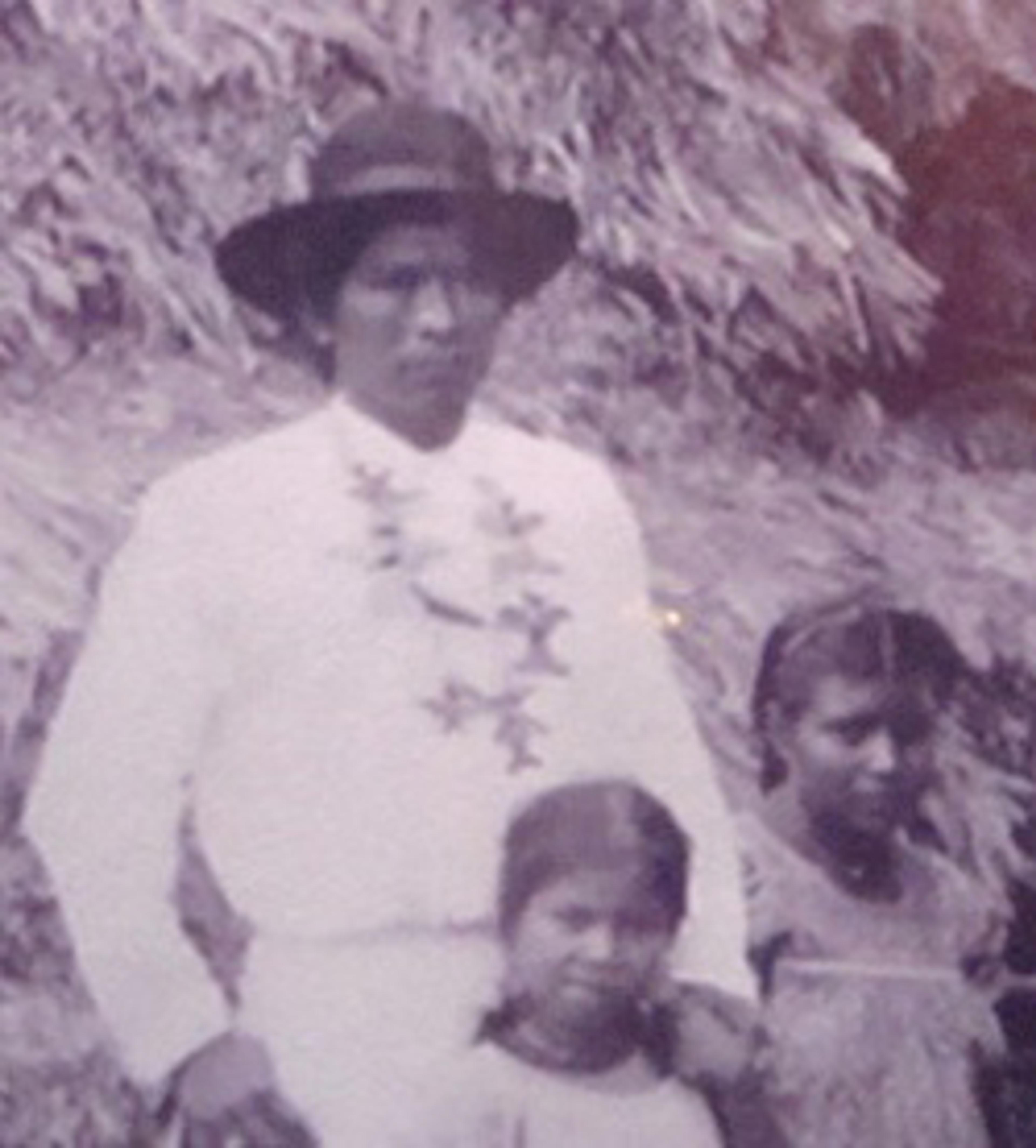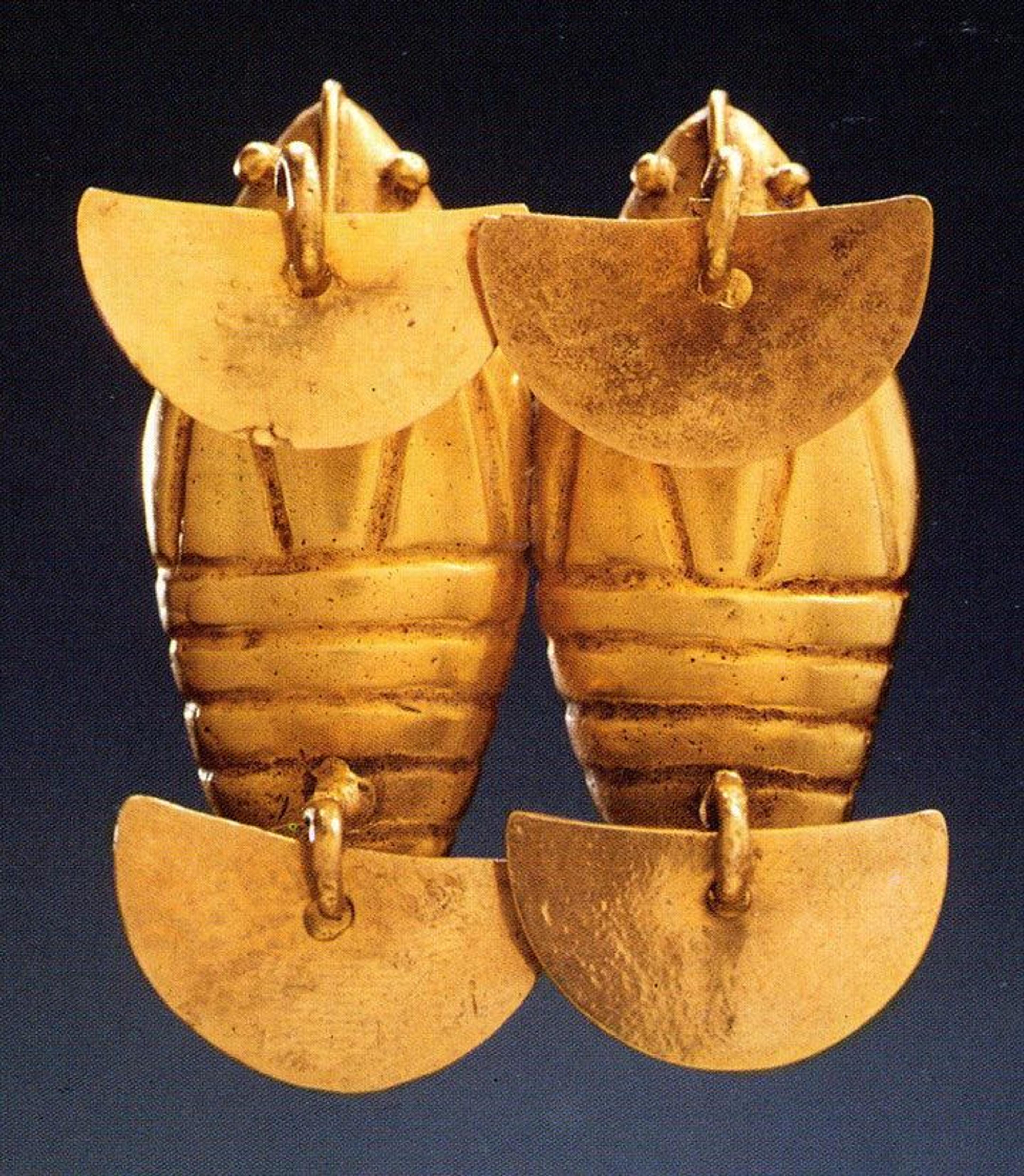How Do We Interpret Sound and Power in an Art Museum?

Double-eagle pendant, 11th–16th century. Panama. Veraguas. Gold, H. 5 1/2 x W. 7 3/4 x D. 1 1/2 in. (14 x 19.7 x 3.8 cm). The Metropolitan Museum of Art, New York, The Michael C. Rockefeller Memorial Collection, Bequest of Nelson A. Rockefeller, 1979 (1979.206.907)
This blog post is also available in Spanish.
«How does your experience in a museum sound? ¿Cómo suena su experiencia en un museo? Think of the sounds of crowded halls compared to the areas where it is possible to single out certain sounds easily: someone unfolding a paper map, or the sound of footsteps on the wooden floors of a gallery.»
Listen to the sounds of gallery 357 at The Met on a recent Wednesday afternoon:
Is this similar to your prior experiences or your expectations of how a museum sounds? It's probably not, or only partially so. This is because sound is inherently relational; it depends on your interactions with other people, as well as with the air, water, space, and other living beings around you. Also, a sound recording is only a microcosm of lived and living experience. My method of recording and your context—how, when, and where you're listening to the recording—will affect whether you decide that the recording is similar to your own experiences or expectations.
How does an artifact or artwork sound? ¿Cómo suena un artefacto o una obra de arte? In a museum, this question is perhaps even more challenging to answer because oftentimes we only experience the objects visually.
As an immobile object, the double-eagle pendant shown at the top of this post appears incapable of producing sound, but its eyes are actually hollow bells with small clappers, likely made of metal, that strike the walls around them when the object moves. Let's listen:
There are two suspension loops on the object's reverse that allow a person to wear it as a pendant. Surely it can also make sound by striking other ornaments on the body as the person moves. This object was likely produced between 700 and 1500 C.E. and worn in a region that archaeologists refer to as Greater Chiriquí, which spans parts of eastern Costa Rica and western Panama, where Bribri, Cabécar, Boruca, Naso, Ngäbe, and Buglé peoples and African diasporic communities live today.
Nineteenth-century photographs of Antonio Saldaña show him wearing similar bird pendants (left). In 1880, Saldaña became a Bribri jefe político, or "political leader," a position in which he served as an ally of the Costa Rican state that, beginning in the 1860s, sought control over the Talamancan region, where Bribri and Cabécar peoples lived and continue to live.

Left: Antonio Saldaña and two of his daughters around 1900. Museo Nacional de Costa Rica. Public-domain photo via Wikimedia Commons
When people look at a photograph such as this, they may see a person who has an abundance of decorative gold pieces; they may see "wealth" in terms of bird pendants. But how do the pendants that he is wearing sound? Do they have clappers? More importantly, who heard these sounds besides Saldaña? The metalworkers who crafted these pendants? The Costa Rican state officials who met with him? And what or whom are we not hearing?
In fact, the uséköl, a figure in the Talamancan region charged with performing ritualized speech and controlling malevolent spirits, was someone who did not speak with foreigners; they withheld sound along with physical presence. The uséköl is also the person who was credited with, at least partially through their speech abilities, causing floods in the 1930s that ravaged the infrastructure of the banana plantation system in this area. People choosing to create or not create sound become powerful, not only due to the sound itself, but especially for their ability to choose. Thinking about and hearing sound allows us to consider a range of manifestations of social and political power. Treating sound as an indicator of power allows new interpretations that do not solely focus on material accumulation.
For another example in The Met collection, we can turn to the area in and around the Cauca River, which extends from Popayán in southern Colombia to the Caribbean Sea.

Double-insect pendant, 5th–10th century. Colombia, Cauca River region. Quimbaya. Gold, H. 2 1/4 x W. 1 7/8 in. (5.7 x 4.8 cm). The Metropolitan Museum of Art, New York, Jan Mitchell and Sons Collection, Gift of Jan Mitchell, 1991 (1991.419.27)
Today, Embera, Gunadule, Senú, Cañamomo, and Afro-Colombian peoples occupy lands in the region where this double-insect pendant was produced. Between 500 B.C.E. and 700 C.E., peoples in the middle Cauca River Valley practiced metalworking in the early Quimbaya tradition. This object is part of a wider array of Quimbaya body ornaments in metal that show insects or insect larvae, single or paired.
How do you imagine this object sounds? On what information are you basing your answer? Perhaps you see the crescent-shaped danglers attached to hooks that connect to the insects. What else would you like to know? Perhaps how thin the danglers are, or what they strike when they move?
A static presentation of the object, such as a photograph, is not necessarily helpful in answering these questions. Certainly, when I view the object in person in its case in the gallery, I can angle my head to see what the danglers conceal. However, the sonic and the visual are directly related. When the object moves, the danglers move, thus producing sound and revealing the remainder of the insects. Let's listen to a recording:
We should consider, even when this object moves, what we do not hear or see in the moment. Imagine all the sounds that went into the pendant's production: A person chiseling to remove the hardened ceramic shell that encased the solidified metal after lost-wax casting. Another person repeatedly hammering sheet metal in order to thin it, forming the danglers. Perhaps that same person asking for the cast object so that they can attach the danglers to the hooks.
The pendant also elicits sounds of the Cauca River today, of people wading into the river, working and talking. There, communities of barequerxs, loosely translated into English as "artisanal miners," extract gold. These people and their experiences are also part of the narrative of the pendant.
I asked you to describe the sounds of these two objects, but how easily were you able to describe them? I often feel at a loss in terms of vocabulary for such an exercise. If I talk about the sound of someone honking the horn of their car, I may say it is annoying or aggressive, but am I describing the sound, or actually my reaction (annoyed), or the motivations of the person honking (aggressive)? Sure, I can say the sound is stringent, short, and medium-pitched, but these terms miss the sound's human aspect, the relational aspect of producing and hearing sound. In short, the question—How does this sound to you?—has no correct answer.
Our experiences of sound reveal relations of power. Sound can be controlling. It is weaponized as part of warfare, as Fatima Al Qadiri discusses in "The Sound of Bombs." However, the production of sound can be a way to reclaim an experience and, as Al Qadiri also notes, "tell my story."
Control of sound may also be control of territory. The sound of retro-excavators and other machinery brought in by large-scale foreign mining projects today—and the water contamination that these projects yield—to the areas where objects like the Quimbaya pendant were produced is distinct from the sound of smaller-scale mining by barequerxs and their use of a batea, the pan used for washing gravel and extracting gold, which does not contaminate the water. When someone has the privilege to see or hear this Quimbaya pendant at The Met, they may want to consider who made it and in what labor and economic conditions. Did these artisans have complete control over the water and mineral resources needed to produce it? The context of the pendant's production—whose details are not fully known—is certainly different from the context of gold extracted by people brought from Africa to Colombia and enslaved by colonists, and different still from the range of extraction situations happening today.
My ability to record the sound of materials that are not part of my heritage should also be questioned. I have the ability to make recordings and share them with you, but do I have the right to? We might also consider the right to sound as we consider the right to water. It implies the right to, and respect for, certain lived and living experiences.
Further Listening and Reading
Al Qadiri, Fatima. "The Sound of Bombs." BBC Radio 4. Last modified March 14, 2017, www.bbc.co.uk/programmes/b08hnj2x.
Boza Villarreal, Alejandra. "Política en la Talamanca indígena: El estado nacional y los caciques, Costa Rica, 1840-1922." Anuario de Estudios Centroamericanos 29, nos. 1–2 (2003): 113–145.
Castillo, Neyla. "Minería aurífera: Etnografía de las formas materiales y simbólicas en el noroeste andino de Colombia." In Metalurgia en la América antigua: Teoría, arqueología, simbología y tecnología de los metales prehispánicos, edited by Roberto Lleras Pérez, 281–321. Bogotá: Fundación de Investigaciones Arqueológicas Nacionales, Banco de la República, 2007.
Guevara Burger, Marcos. "Sobre el valor pragmático del mito: Apuntes desde la mitología comparada de Talamancas y Kunas." Anuario de Estudios Centroamericanos 35/36 (2009–10): 11–35.
Palomino, Sally. "La minera AngloGold suspende trabajos en Colombia tras el rechazo de un pueblo a su proyecto." Desde Abajo. Last modified April 28, 2017, https://www.desdeabajo.info/ambiente/31389-la-minera-anglogold-suspende-trabajos-en-colombia-tras-el-rechazo-de-un-pueblo-a-su-proyecto.html.
Bryan Cockrell
Bryan Cockrell is a Mellon Curatorial Fellow in the Department of the Arts of Africa, Oceania, and the Americas.